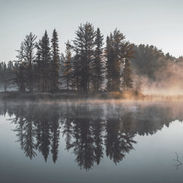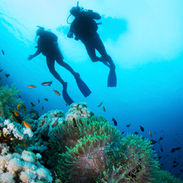Geography and Ecology
Geography
Kamien has a temperate climate with broadleaf and mixed forests. The dominant broadleaf trees in this biome include oaks, beeches, maples, or birches. Temperate broadleaf and mixed forests occur in areas with a distinct warm and cool season, which give it a moderate annual average temperature -3 to 15.6 °C. Kamien has several unique geographical features such as the Kamen lakes and the Guri hills.
Kamien used to be quite a bleak and barren region but thanks to the scientific treatment of the sour soil and our progressive views on ecology, Kamien has become greener than ever before. Pietra has the most forest cover of Kamien but that does not mean the rest of Kamien is devoid of greenery: urban development carefully planned our cities to allow for green areas and the agricultural facilities in Guri were built with green roofs to optimize oxygen production.
Fauna
Of all the animals in Kamien, the jellyfish is the most important. Kamien has 157 different kinds of jellyfish and they live in large quantities at the coasts of Pietra. The main feature of a true jellyfish is the umbrella-shaped bell. This is a hollow structure consisting of a mass of transparent jelly-like matter known as mesoglea, which forms the hydrostatic skeleton of the animal. Jellyfish range from about one millimetre in bell height and diameter, to nearly 2 metres in bell height and diameter.
Thanks to years of scientific research, we now know that an unusual species, the Turritopsis dohrnii, is effectively immortal because of its ability under certain circumstances to transform from medusa back to the polyp stage, thereby escaping the death that typically awaits medusae post-reproduction if they have not otherwise been eaten by some other ocean organism. The Kamien Cryogenic Technology (KCT) is derived from these animals.
Ecology
As we hinted at before, Kamien plays a pioneering role in environmentally friendly techniques. We take care of our natural forests, make sure our cities are planned to allow for an optimized living experience and all our agricultural facilities were built to be self-sustaining.







